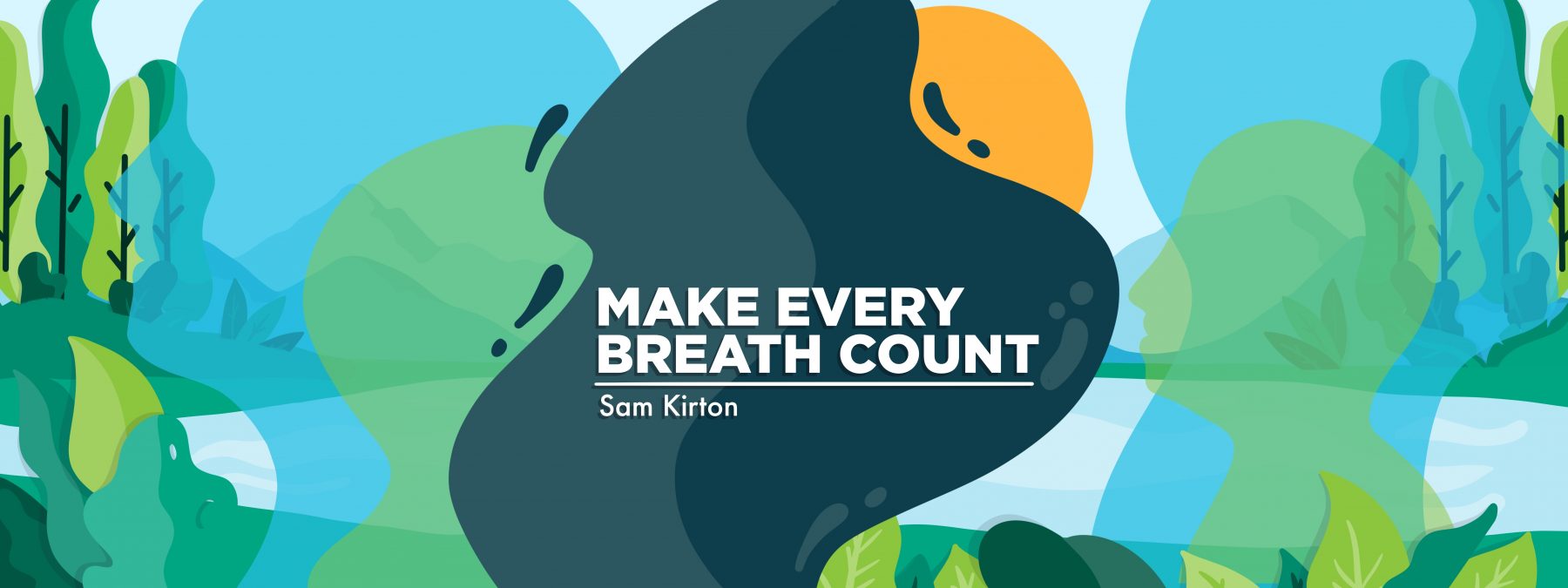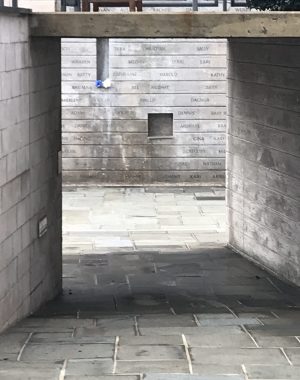Honoring My First Year With My New Lungs

Following my diagnosis of idiopathic pulmonary fibrosis (IPF) in January 2017, I knew the disease would diminish my quality of life. For about three years, my IPF progression stair-stepped — that is, I’d remain stable for a period, and then I’d experience a decline in lung function and oxygen saturation.
In March 2020, at the beginning of the COVID-19 pandemic, my case went before a transplant committee. I’d completed all the testing, and the committee found I was a good candidate. It recommended that I be deferred and continue with my own lungs while my care team closely monitored me. Almost one year later to the day, my condition had deteriorated. In March 2021, I was listed for a transplant.
On July 9 of that year, at a couple of minutes past 9 a.m., I received the call offering me a lung. It marked the beginning of a very long day. Arriving at Inova Fairfax Hospital in Falls Church, Virginia, around noon, I spent the rest of the day being prepped as the team waited for my donor’s gift to arrive. At 3 a.m. on July 10, I was taken into surgery. Ten days later, on July 20, I was discharged from the hospital.
One year forward: July 9
Fast-forward to this past weekend: Saturday, July 9, marked the one-year anniversary of my receiving that call. The headquarters of the United Network for Organ Sharing (UNOS) is in Richmond, Virginia, a little over an hour from my home. It’s also the location of the National Donor Memorial.
On that rainy morning, I made the drive with my wife, Susan, arriving just before 9 a.m. As I approached the memorial from the parking lot, I broke down. I was overcome by emotion from seeing the partial view of the wall through the tunnel. The first names of organ donors are etched into the stone wall of the memorial. The names are those of people who gave the gift of life to others like me.

My first look at the National Donor Memorial in Richmond, Virginia. (Photo by Sam Kirton)

The serenity of the National Donor Memorial was a perfect place for me to spend time with my unknown donor. (Photo by Sam Kirton)
At the memorial, I was able to sit quietly with the stone of my unknown donor and their family.
On Dec. 24, I’d written a letter to my donor family through the Washington Regional Transplant Community coordinator. (I don’t know the donor, but the community serves as an intermediary.) The first sentence read, “It is only because of your generous gift of life that I am.” Thank you will never be enough.
Last year, before my transplant, Susan and I weren’t sure I’d make it to Christmas. Today, I continue to thrive thanks to my donor’s gift.
July 10
Our immediate support team had 13 people. Last Sunday, 10 of those 13 people who played key roles in our journey gathered at our home so we could say thank you. Our home is a little over 90 miles from our transplant center, so it’s not an easy commute. We’d engaged this village early on to prepare for the transplant, and they’d answered the call.
Of the three who couldn’t be with us on Sunday, two of them had spent time with us the previous week. In 2021, Sheila and Heath had taken care of us, securing an apartment near the hospital, utilities, and rental furniture in anticipation of me being discharged. Julie, the third of the absent supporters, had been there every time we called, and had even met Susan at the emergency veterinarian to put our cat, Prince, down when his health failed.
Those gathered with us were the ones who’d taken care of our home, visited our cats, taken the trash to the dump, and answered Susan’s calls when she needed assistance. Two of those with us on Sunday, Ronda and Sandra, had been backup caregivers. In the event Susan needed a break or had a conflict, they’d attended the hospital’s training for caregivers before I was discharged.
Finally, there was our much-loved Sandy. She’d been our enforcer. When someone couldn’t understand the rules for updates, visits, and phone calls, Sandy had helped them understand “no” in a very succinct manner.
Today
I cannot believe a year has gone by. Each day I say a prayer for my donor and donor family. I realize that last weekend was the first anniversary of the passing of my donor, and likely a vivid reminder of their grief.
My first year following the bilateral lung transplant has been a success. The one-year survival rate for patients was 88.29% in 2020, the most recent year UNOS has published. This is up from 84.94% in 2011.
I’ve been fortunate enough to avoid any hospitalizations in my first year. My kidneys have had a rough time, but that’s expected with a lung transplant. My care team is managing it. My job is to continue protecting my lungs as the wonderful gift of life from my donor. It’s how I honor them.
These two days will be emotional each year. Each year, I plan to deal with them the same way. Thanks to my donor, I continue to make every breath count.
Note: Pulmonary Fibrosis News is strictly a news and information website about the disease. It does not provide medical advice, diagnosis, or treatment. This content is not intended to be a substitute for professional medical advice, diagnosis, or treatment. Always seek the advice of your physician or other qualified health provider with any questions you may have regarding a medical condition. Never disregard professional medical advice or delay in seeking it because of something you have read on this website. The opinions expressed in this column are not those of or its parent company, Bionews, and are intended to spark discussion about issues pertaining to pulmonary fibrosis.









Marilyn Cellucci
Dear Sam,
I was so touched by your comments about the donor and all of the team that helped you along the way. God bless you all.
Kindly,
Marilyn
Samuel Kirton
Marilyn,
Thanks for reading my column and your kind words.
Sam ...
Darlene Cochran
Sam, Thank you for sharing this amazing life journey for both you and your donor. The impact for a family who chooses to save a life with an organ donation is tremendous and alters the universe for both families. The story of a transplant is much larger in real life than we can imagine, your story brings the real daily picture front and center. God bless you and your family as well as the Donar family. You are a hero living with a team of heroes, and that is inspiring for those of us who look for the leaders among us.
Samuel Kirton
Darlene,
Thanks for reading my column and your comments. Organ donation has the ability to impact the lives of so many in such a positive way. As the recipient I know I have grieved with my donor family even though the identity of my donor remains unknown to me. I will continue to write my donor family to thank them for their gift to me and how I am caring for their gift.
Sam ...